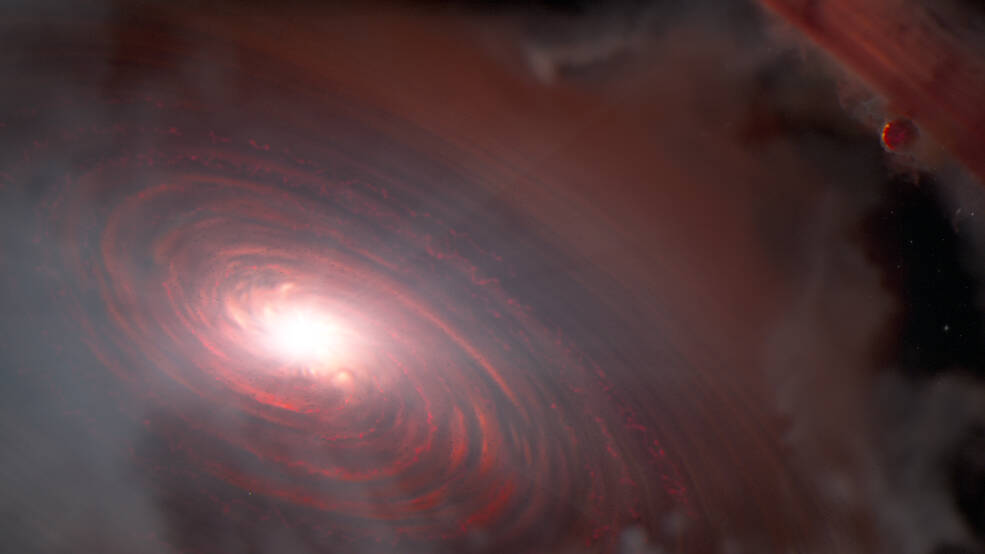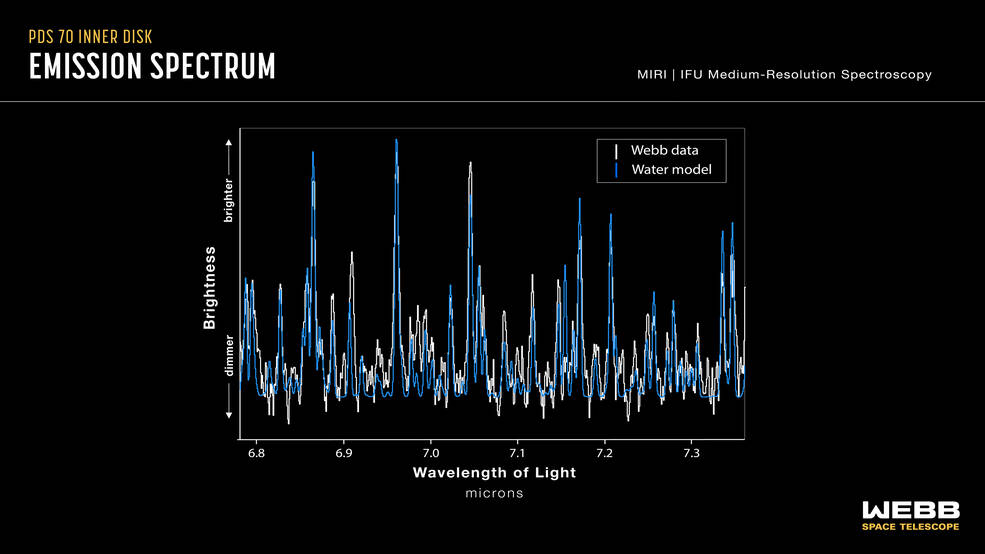The James Webb Space Telescope (JWST) has for the first time detected water vapor in the inner part of the protoplanetary disk. The finding shows that the water necessary for the formation of life can be present on planets from the very beginning.
Water in the protoplanetary disk
The discovery was made during observations carried out using the MIRI mid-infrared camera installed on the JWST. Their target was the PDS 70 star system, located 370 light-years from Earth. It consists of a newborn orange dwarf surrounded by a protoplanetary disk.

The protoplanetary disk around PDS 70 consists of an inner and an outer part. They are separated by a gap of 8 billion km wide. This is more than the distance between the Sun and Pluto. The gap is associated with the formation of two very massive Jupiter-like exoplanets in this region, which actively use the substance of the protoplanetary disk as a building material.
During the observations, JWST could detect water vapor in the inner protoplanetary disk of PDS 70. Its traces were found at a distance of less than 160 million km from the star. This is comparable to the radius of the Earth’s orbit.
The find is very important. Astronomers have long been interested in exactly how water got to Earth. And the study of forming star systems makes it possible to find an answer to this question.
Where did the water come from?
At the moment, researchers have two main versions about the source of water in the protoplanetary disk PDS 70. According to one version, it had been there since the time of the original gas-dust cloud from which the star was formed. The second possibility is that the ice-covered dust particles are transferred from the cold outer disk to the hot inner disk, where the water ice sublimates and turns into vapor. However, in this case it is unclear how the dust manages to overcome the gap formed by the two giant planets.

Another logical question is why the powerful ultraviolet radiation of the star did not destroy all the water molecules. Astronomers believe that this may be due to the fact that the surrounding material, such as dust, acts as a protective shield.
In any case, the discovery plays an important role in understanding exactly how planets acquire water. Although researchers have not yet found exoplanets in the inner protoplanetary disk of PDS 70, they will almost certainly form in the future.
Recall that this is not the first high-profile news in recent times, in which the PDS 70 star system appears. Recently, astronomers have managed to find signs of the existence of a Trojan exoplanet in it.
According to https://www.nasa.gov
Follow us on Twitter to get the most interesting space news in time
https://twitter.com/ust_magazine
